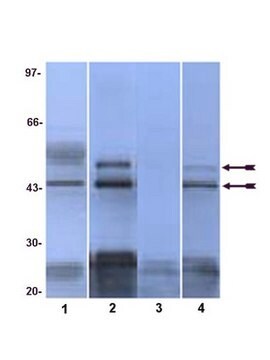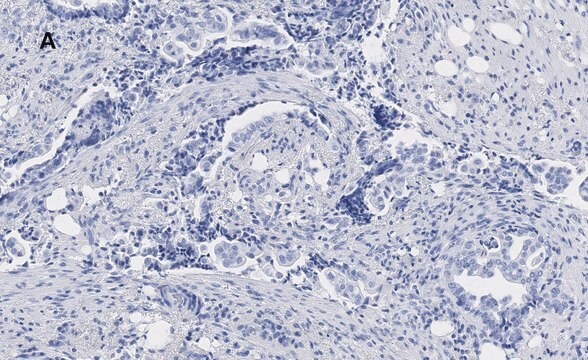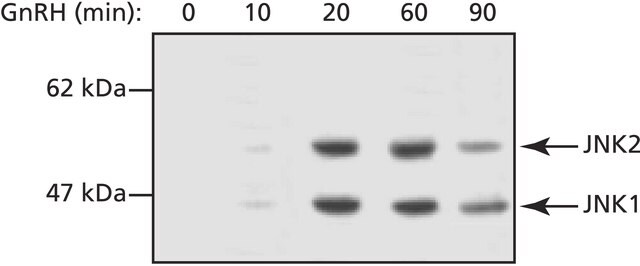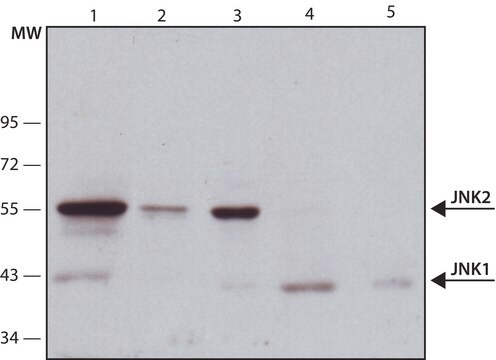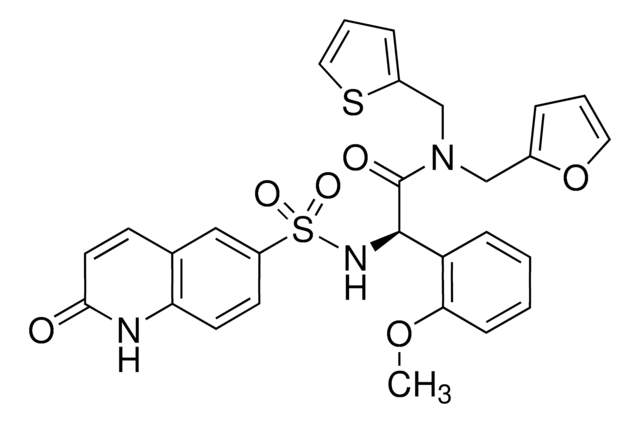J4644
Anti-phospho-JNK1/2 (pThr183/pTyr185) antibody produced in rabbit
affinity isolated antibody, buffered aqueous glycerol solution
Sinônimo(s):
Anti-phospho-SAPK (pTpY183/185), Anti-phospho-Stress Activated Protein Kinase (pTpY183/185), Anti-phospho-c-Jun N-terminal Kinase 1/2 (pTpY183/185)
About This Item
Produtos recomendados
fonte biológica
rabbit
Nível de qualidade
conjugado
unconjugated
forma do anticorpo
affinity isolated antibody
tipo de produto de anticorpo
primary antibodies
clone
polyclonal
forma
buffered aqueous glycerol solution
reatividade de espécies
rat, human
técnica(s)
immunocytochemistry: 1:250
immunofluorescence: 1:250
immunohistochemistry: Assay Dependent
western blot: 1:200-1:2000 (using human 293 cells treated with UV radiation)
nº de adesão UniProt
Condições de expedição
wet ice
temperatura de armazenamento
−20°C
Informações sobre genes
human ... MAPK8(5599)
Descrição geral
Imunogênio
Aplicação
Ações bioquímicas/fisiológicas
Anti-phospho-JNK1/2 (SAPK) (pThr183/pTyr185 ) specifically recognizes the endogenous, active forms of JNK1 and 2 phosphorylated at threonine 183 and tyrosine 185.
forma física
Exoneração de responsabilidade
Não está encontrando o produto certo?
Experimente o nosso Ferramenta de seleção de produtos.
recomendado
Código de classe de armazenamento
10 - Combustible liquids
Classe de risco de água (WGK)
WGK 3
Ponto de fulgor (°F)
Not applicable
Ponto de fulgor (°C)
Not applicable
Certificados de análise (COA)
Busque Certificados de análise (COA) digitando o Número do Lote do produto. Os números de lote e remessa podem ser encontrados no rótulo de um produto após a palavra “Lot” ou “Batch”.
Já possui este produto?
Encontre a documentação dos produtos que você adquiriu recentemente na biblioteca de documentos.
Nossa equipe de cientistas tem experiência em todas as áreas de pesquisa, incluindo Life Sciences, ciência de materiais, síntese química, cromatografia, química analítica e muitas outras.
Entre em contato com a assistência técnica